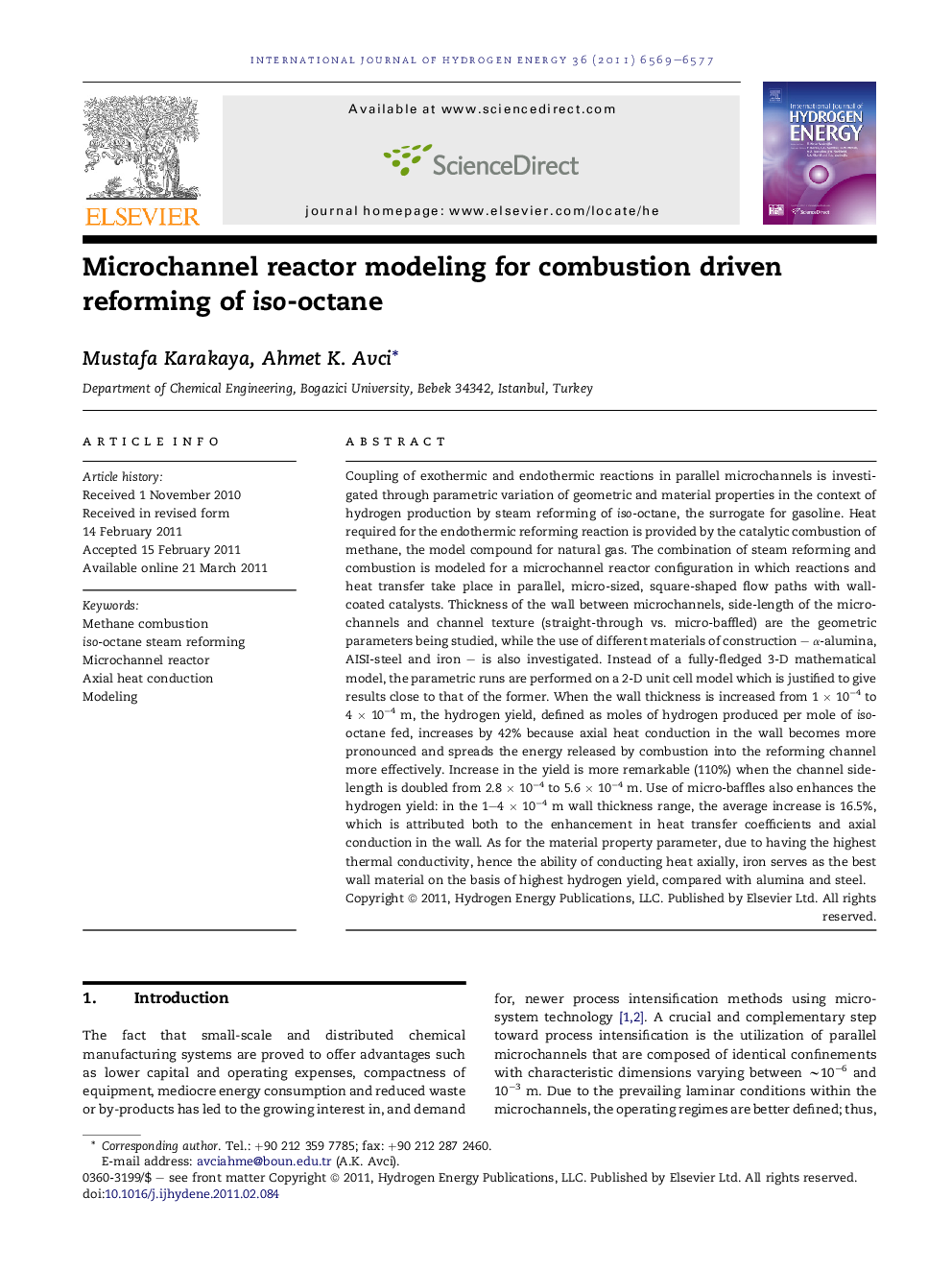| کد مقاله | کد نشریه | سال انتشار | مقاله انگلیسی | نسخه تمام متن |
|---|---|---|---|---|
| 1276015 | 1497582 | 2011 | 9 صفحه PDF | دانلود رایگان |

Coupling of exothermic and endothermic reactions in parallel microchannels is investigated through parametric variation of geometric and material properties in the context of hydrogen production by steam reforming of iso-octane, the surrogate for gasoline. Heat required for the endothermic reforming reaction is provided by the catalytic combustion of methane, the model compound for natural gas. The combination of steam reforming and combustion is modeled for a microchannel reactor configuration in which reactions and heat transfer take place in parallel, micro-sized, square-shaped flow paths with wall-coated catalysts. Thickness of the wall between microchannels, side-length of the microchannels and channel texture (straight-through vs. micro-baffled) are the geometric parameters being studied, while the use of different materials of construction – α-alumina, AISI-steel and iron – is also investigated. Instead of a fully-fledged 3-D mathematical model, the parametric runs are performed on a 2-D unit cell model which is justified to give results close to that of the former. When the wall thickness is increased from 1 × 10−4 to 4 × 10−4 m, the hydrogen yield, defined as moles of hydrogen produced per mole of iso-octane fed, increases by 42% because axial heat conduction in the wall becomes more pronounced and spreads the energy released by combustion into the reforming channel more effectively. Increase in the yield is more remarkable (110%) when the channel side-length is doubled from 2.8 × 10−4 to 5.6 × 10−4 m. Use of micro-baffles also enhances the hydrogen yield: in the 1–4 × 10−4 m wall thickness range, the average increase is 16.5%, which is attributed both to the enhancement in heat transfer coefficients and axial conduction in the wall. As for the material property parameter, due to having the highest thermal conductivity, hence the ability of conducting heat axially, iron serves as the best wall material on the basis of highest hydrogen yield, compared with alumina and steel.
Journal: International Journal of Hydrogen Energy - Volume 36, Issue 11, June 2011, Pages 6569–6577